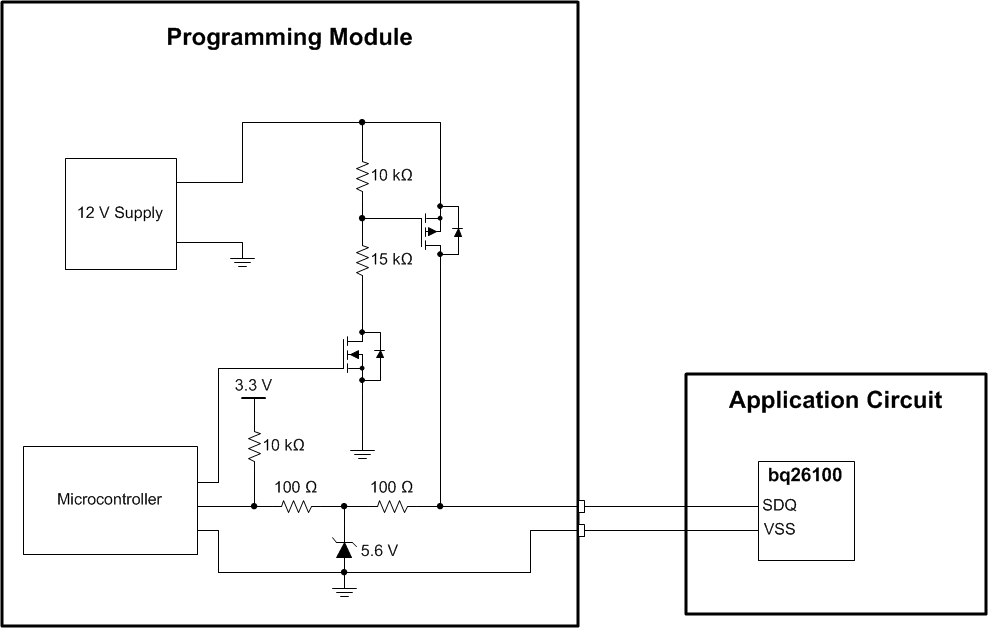SLUS696C June 2006 – February 2019
PRODUCTION DATA.
- 1 Features
- 2 Applications
- 3 Description
- 4 Revision History
- 5 Pin Configuration and Functions
- 6 Specifications
-
7 Detailed Description
- 7.1 Overview
- 7.2 Functional Block Diagram
- 7.3 Feature Description
- 7.4 Device Functional Modes
- 7.5
Programming
- 7.5.1 Communicating with the bq26100 Device
- 7.5.2 Memory Descriptions
- 7.5.3 SHA-1 Description
- 7.5.4 Key Programming Description
- 7.6 Register Maps
- 8 Application and Implementation
- 9 Power Supply Recommendations
- 10Layout
- 11Device and Documentation Support
- 12Mechanical, Packaging, and Orderable Information
Package Options
Mechanical Data (Package|Pins)
- DRP|6
Thermal pad, mechanical data (Package|Pins)
Orderable Information
8.2.2 Detailed Design Procedure
The bq26100 device requires a 12-V maximum-pulse signal to program the OTP memory. It is necessary to have a programming test setup for production. shows an example of what the circuit could be for such a setup. The Programming Module contains the microcontroller that acts as SDQ master and also controls the time of the programming pulse and its width. The 12-V supply is the source for the programming pulse. Only SDQ and VSS signals need to exit the test setup as the Application Circuit containing the bq26100 device under test is connected only for programming and verifying data.
The Programming Module typically will connect to a PC using an interface such as USB. The diagram in does not include the interface to a PC, which can vary depending on the system designer's choice.
 Figure 25. Programming Circuit Example
Figure 25. Programming Circuit Example